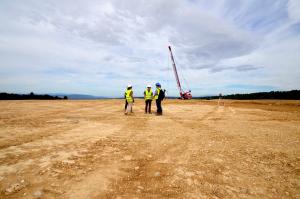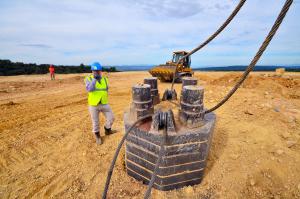What's happening behind the hill?
As work proceeds behind the hill on the east side of the worksite, the feeling is one of déjà vu: things look strangely familiar, as if time had rolled back to the years 2007-2008 when the ITER platform was being levelled and readied for construction.
And indeed it is another platform that is taking shape, although on a much smaller scale. One that will support the 9,000 m² warehouse and outdoor holding area where average-size components will be stored, pending their integration into the machine.
Compacting operations will take about one month. Once finalized, soil pressure tests will be performed to confirm that the two-hectare platform presents the required bearing capacity to support the warehouse and outside storage area.




